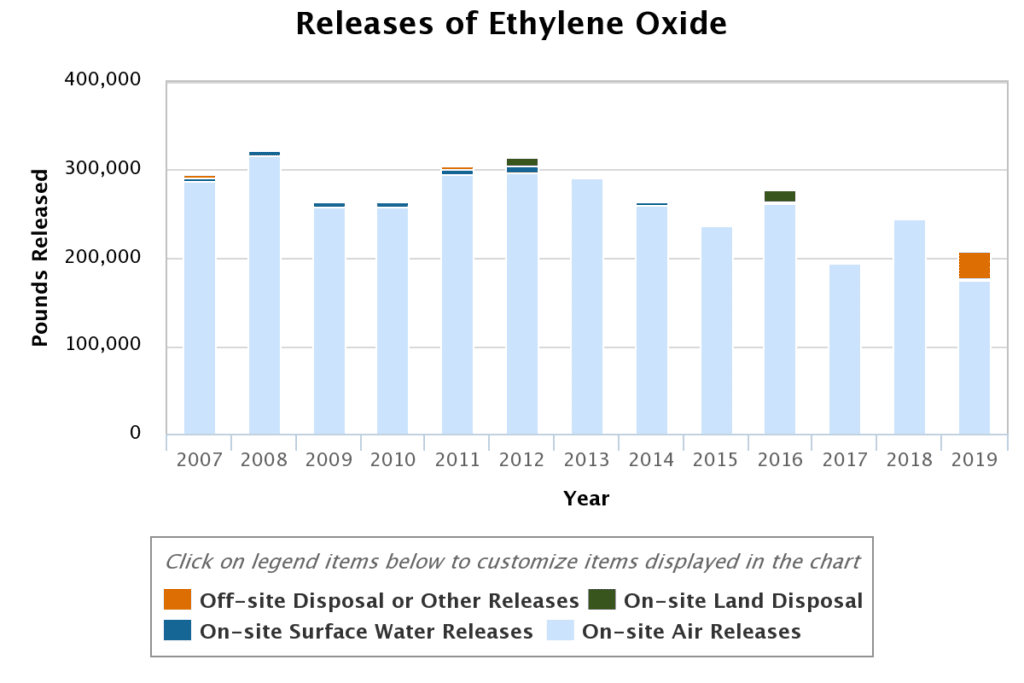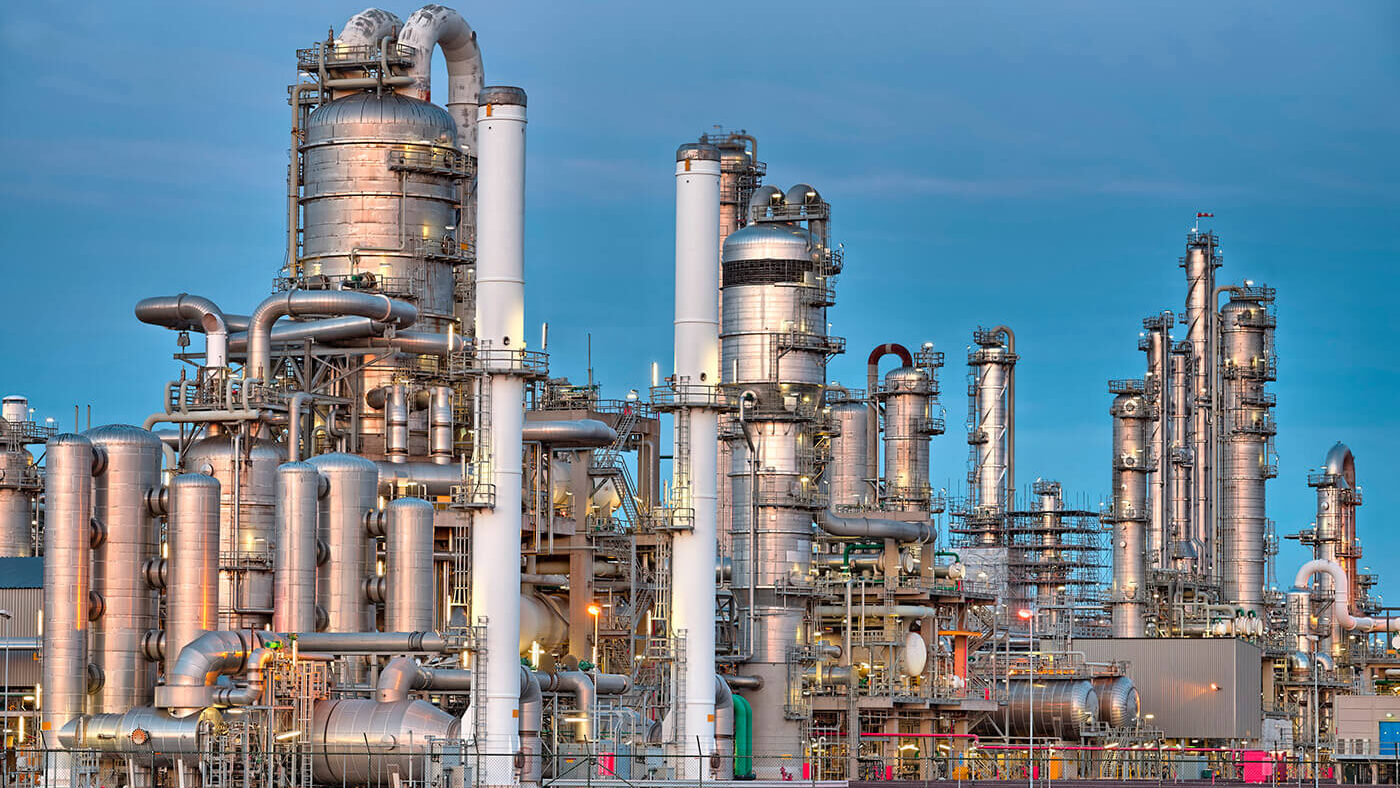Recent headlines were made when food was recalled after it was found to be contaminated with a hazardous material called ethylene oxide in the European Union. Ethylene Oxide also made headlines in the United States due to concerns that industrial processes were releasing this gas into the atmosphere at dangerous levels. This led to increased regulatory scrutiny for this contaminant not only in Europe, the United States, and many other countries. Because of these issues, governments and health organizations have been putting increased scrutiny of the use of Ethylene Oxide.
What is Ethylene Oxide?
Ethylene oxide (C2H4O) is a flammable colorless gas that is highly reactive and soluble in multiple media, including water. It can be produced through natural processes or as a byproduct of combustion. Most of the ethylene oxide used across industries are produced by manmade processes.
Where is Ethylene Oxide Used?
Most of the industrially produced ethylene oxide is used as a chemical precursor (meaning an ingredient) to make other chemically produced materials such as antifreeze and plastics. One of the most common products produced using ethylene oxide is polyethylene terephthalate (PET), which is the plastic used to make water bottles, food wraps, and many other products that are essential to modern day life.
Due to the compound’s high reactivity, it is also a very efficient low temperature sterilizer that is often used on products that cannot be sterilized through high heat or radiation. Ethylene oxide was one of the most common sterilization methods in the food industry between the 60’s and 80’s but fell out of favor in most developed countries once governments approved the use of irradiated food equipment. Today, ethylene oxide is still used to sterilize a limited group of food items, such as dried fruits, spices, and food additives depending on the local regulation. The European recall was the result of finding the ethylene oxide levels in additives from India were too high, classifying them as contaminated.
However, it’s most important modern use as a sterilizer falls in the medical industry. Ethylene oxide is used to sterilize medical equipment that cannot be sterilized through heat treatments. This includes:
- equipment with plastic components
- equipment with embedded electronics
- bandages, ointments and other temperature sensitive materials
In fact, the United States Food and Drug Administration (FDA) has recognized that ethylene oxide may be the only method that effectively sterilizes many medical devices.
Exposure and Health
The general public is typically exposed to ethylene oxide through industrial releases from manufacturing and sterilization facilities, smoking, and from residuals ethylene oxide left on consumer products that haven’t been properly decontaminated. In industrial releases, ethylene oxide is typically released into the air and can dissolve in rain and surface waters.

Exposure to ethylene oxide typically occurs through inhalation or ingestion (inhaling contaminated air, eating contaminated food, smoking, etc.). Chronic exposure (low doses over a long duration) to ethylene oxide can result in dermal, respiratory, and ocular irritation, nervous system damage, reproductive issues, and an increased cancer risk.
Environmental Regulation on Ethylene Oxide
Ethylene oxide is regulated in the United States by three different agencies depending on use: United States Environmental Protection Agency (USEPA), Occupational Health and Safety Organization (OSHA) and the FDA.
- The FDA regulates medical device sterilization
- EPA retains regulatory authority over most antimicrobial uses on permanent or semi-permanent food-contact surfaces, and acquires all food uses of ethylene oxide
- OSHA has set an employee exposure limit of 1 part per million (ppm) over an eight-hour time weighted average (TWA) and a short-term exposure limit of 5 ppm over a fifteen-minute TWA
The USEPA Classified Ethylene Oxide as a Hazardous Air Pollutant under the National Emission Standard for Hazardous Air Pollutants (NESHAP) under the Clean Air Act (CAA), and as a pesticide under Fungicide, and Rodenticide Act (FIFRA). Currently under the CAA ethylene oxide is not regulated as an individual contaminant, instead it is included in the total Miscellaneous Organic Chemical industry established emission limits. USEPA is currently reviewing the regulation of ethylene oxide as an individual contaminant, much in the same way perchloroethylene (dry cleaning fluid) emissions are regulated today. The goal is to regulate Ethylene Oxide emissions in the following industries by the associated dates:
- Commercial Sterilizers: 2022
- Hospital Sterilizers: 2023
- Group 1 Polymers and Resins (Neoprene): 2024
- Synthetic Organic Chemicals Manufacturing Industry: 2024
- Polyether Polyols Production: 2024
- Chemical Manufacturing Area Sources: 2024
Benefit of Environmental Expert Involvement
The increased scrutiny and regulation of ethylene oxide has the potential to impact many industries and facilities and bring increased awareness of the environmental and human health impacts to the general public. VERTEX can help our clients assess risks associated with this contaminant during property transaction due diligence or ongoing property management and can assist our insurance clients with assessing risks arising from ethylene oxide. This is a developing environmental issue that VERTEX will be following closely.
To learn more about VERTEX’s Environmental Consulting services or to speak with an Environmental Expert, call 888.298.5162 or submit an inquiry.




